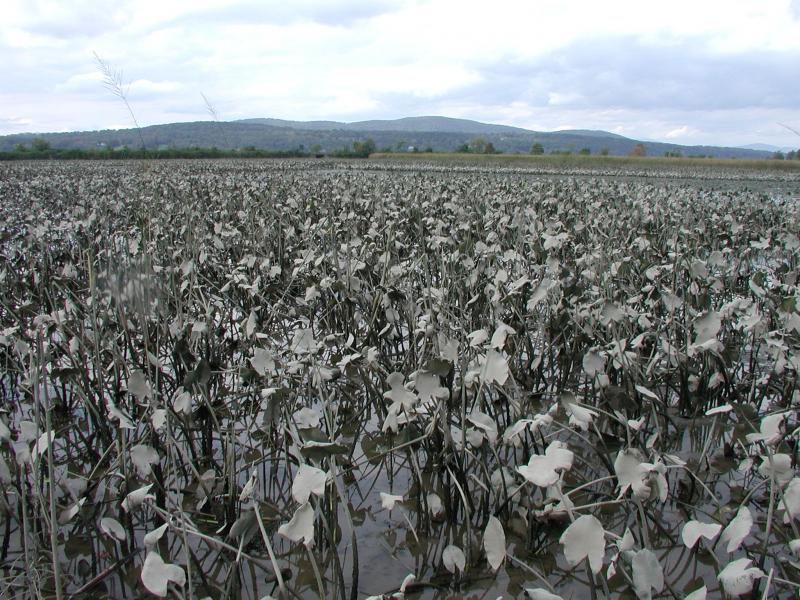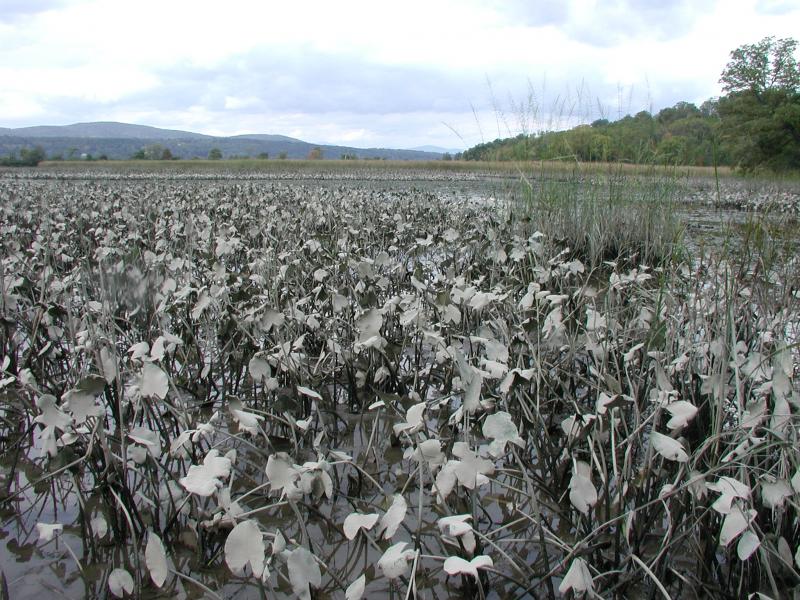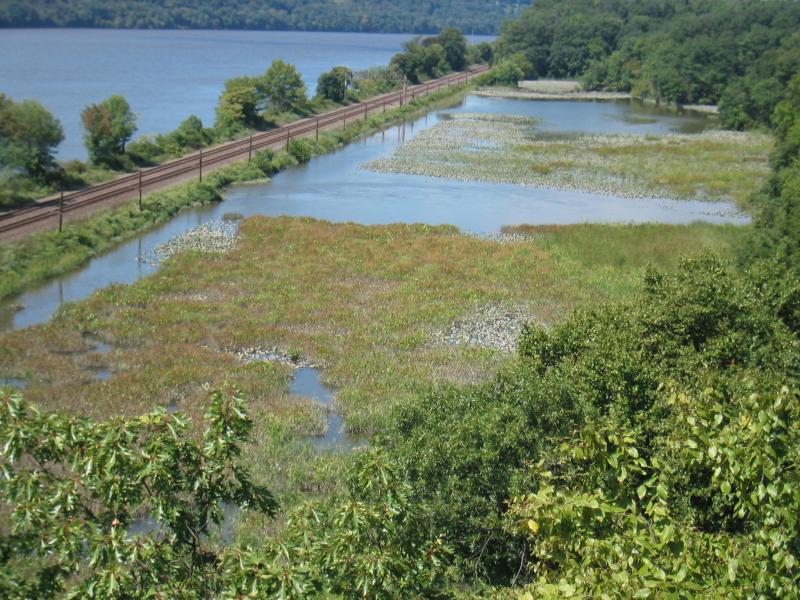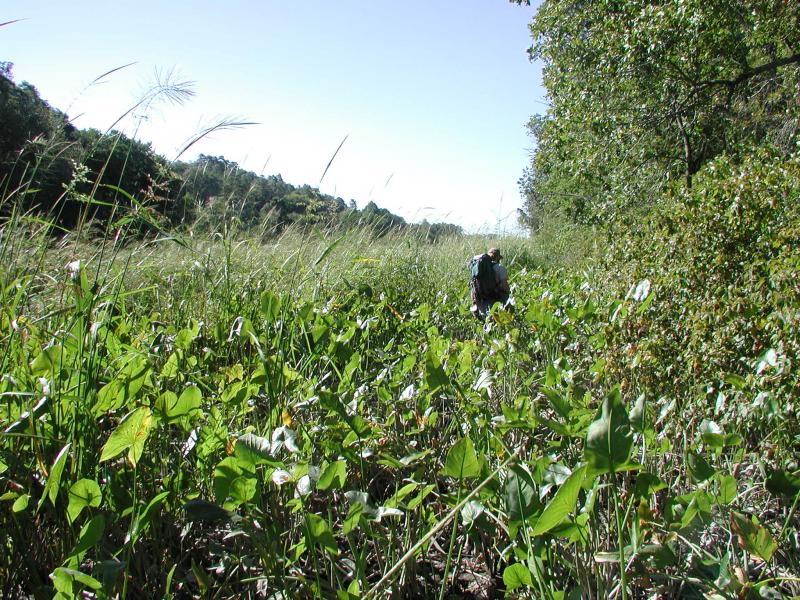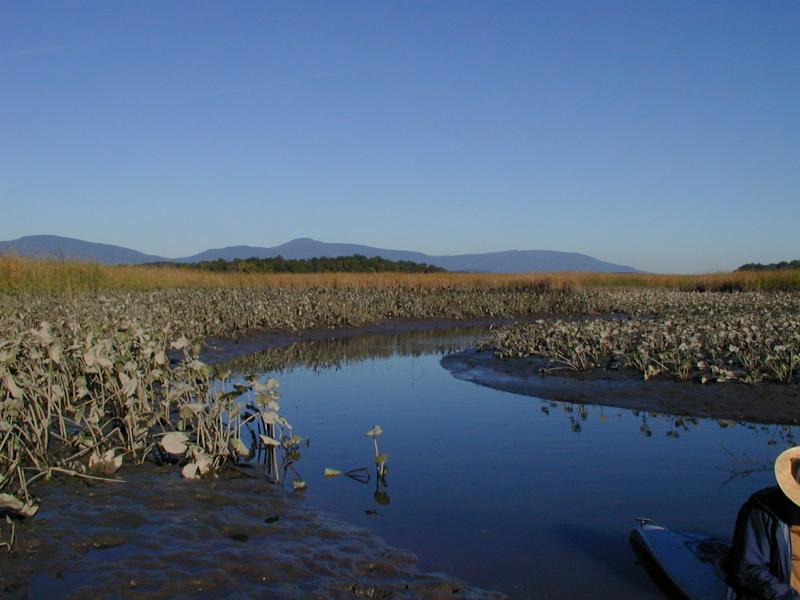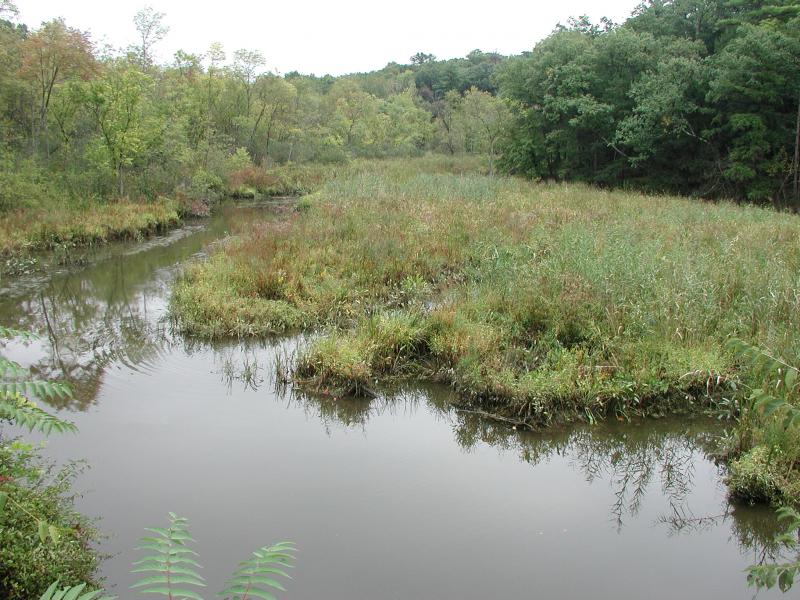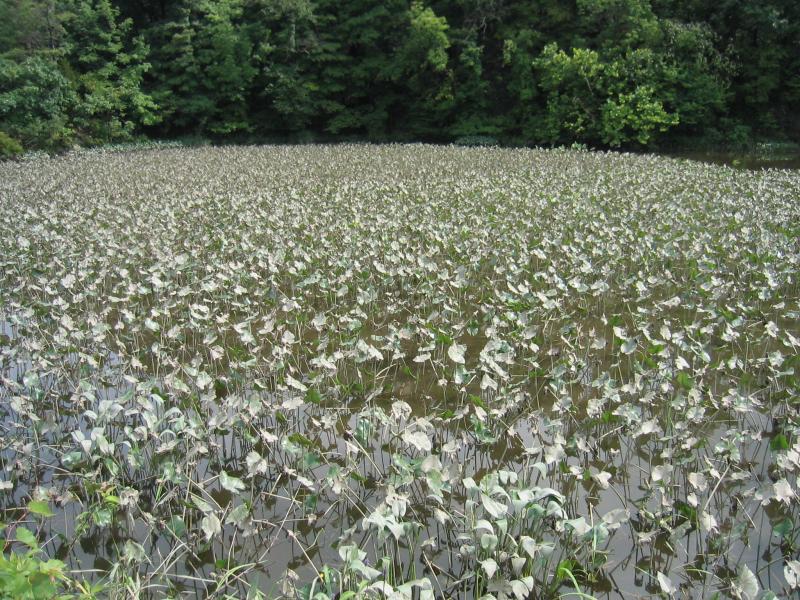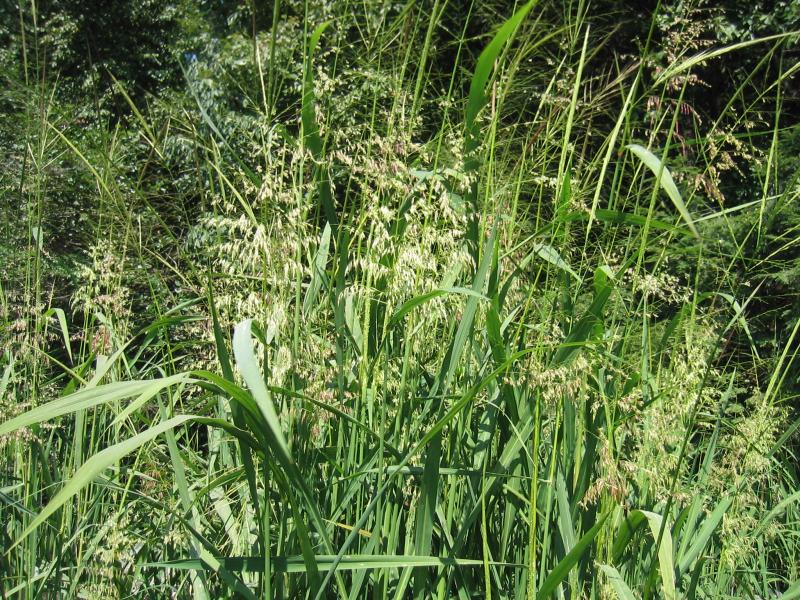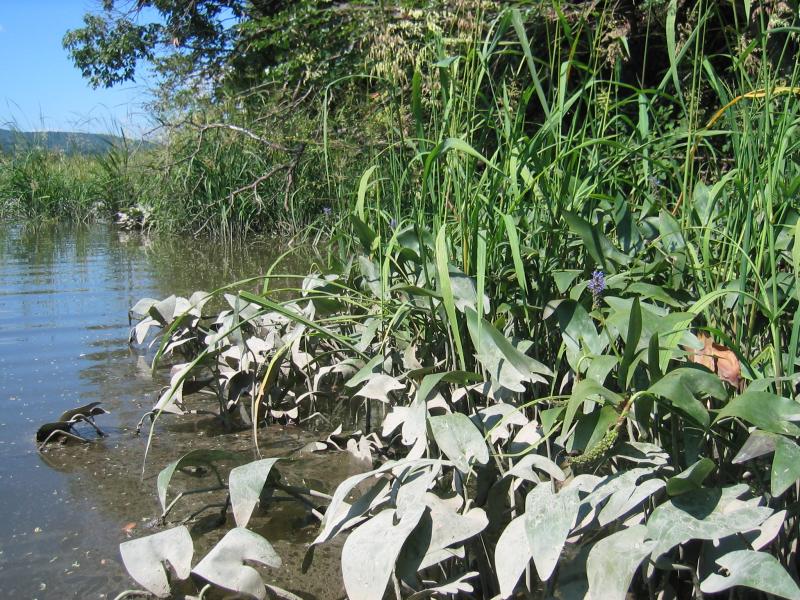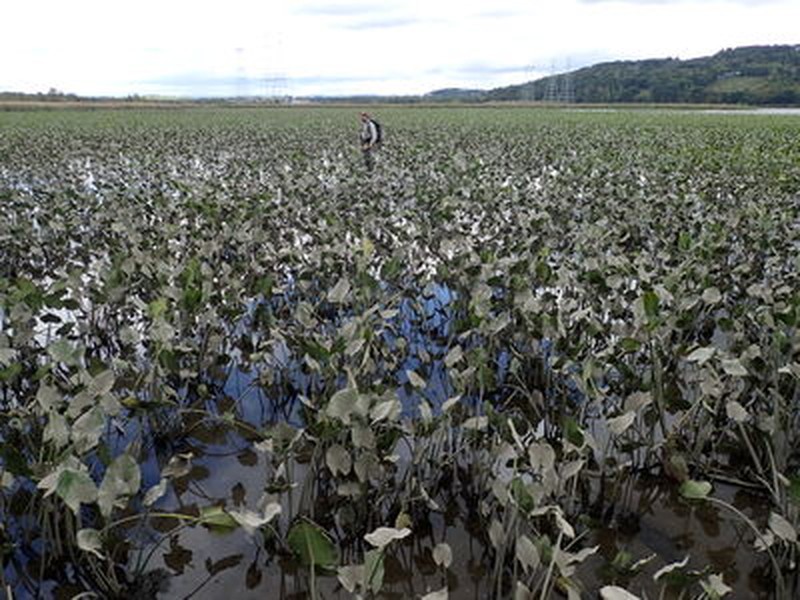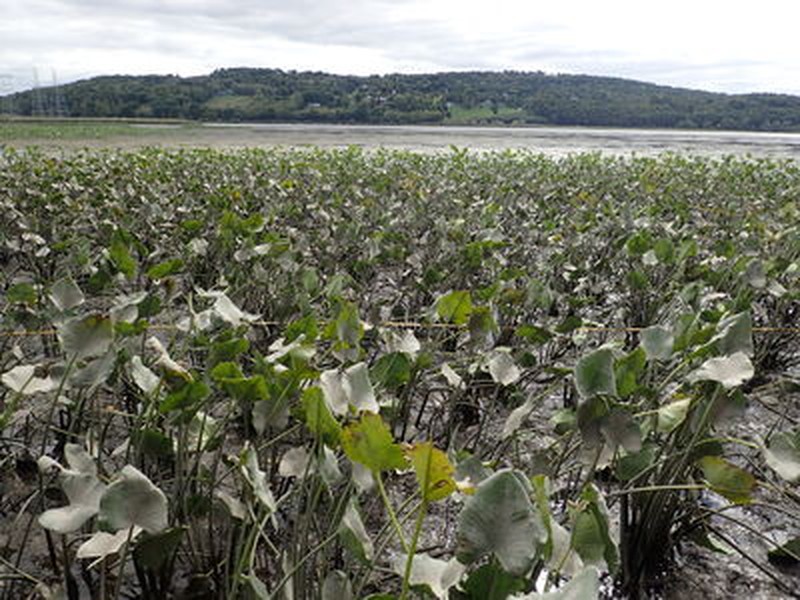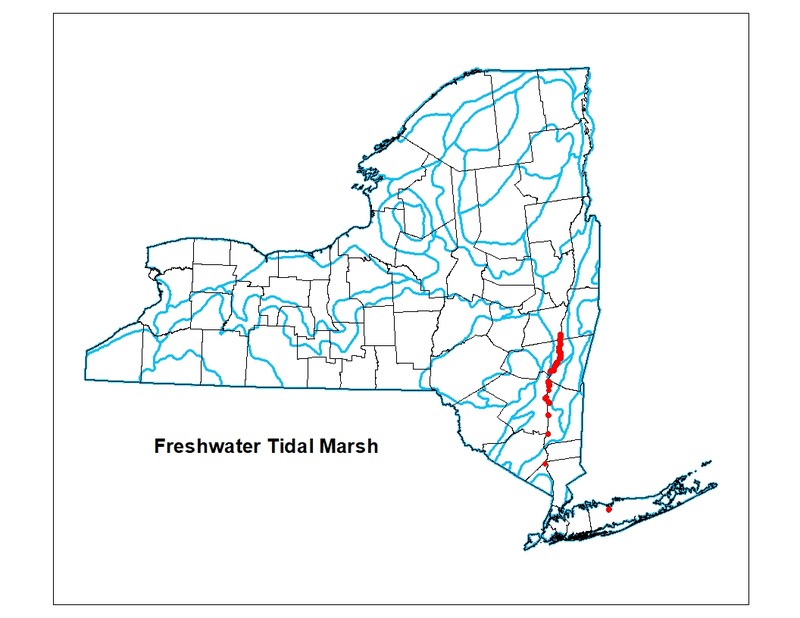Freshwater Tidal Marsh
- System
- Estuarine
- Subsystem
- Estuarine Intertidal
- State Protection
- Not Listed
Not listed or protected by New York State.
- Federal Protection
- Not Listed
- State Conservation Status Rank
- S2
Imperiled in New York - Very vulnerable to disappearing from New York due to rarity or other factors; typically 6 to 20 populations or locations in New York, very few individuals, very restricted range, few remaining acres (or miles of stream), and/or steep declines.
- Global Conservation Status Rank
- G3G4
Vulnerable globally, or Apparently Secure - At moderate risk of extinction, with relatively few populations or locations in the world, few individuals, and/or restricted range; or uncommon but not rare globally; may be rare in some parts of its range; possibly some cause for long-term concern due to declines or other factors. More information is needed to assign either G3 or G4.
Summary
Did you know?
A characteristic species found in freshwater intertidal marshes is wild rice (Zizania aquatica). In addition to providing habitat and food for fish and waterfowl, wild rice has been an important food staple for Native Americans for thousands of years. The ancestral grain to wild rice has even been found in layers of earth dating back 12,000 years! Today, about 23 million pounds of "wild" wild rice varieties as well as "cultivated" wild rice varieties are produced each year around the world - 4 million of which is considered "wild" grow.
State Ranking Justification
This community is restricted to the freshwater portion of tidal rivers. The majority of occurrences are on the Hudson River with over 75% in Greene, Columbia, and Dutchess Counties. There are estimated to be about 40 occurrences in the state. Several of these occurrences are threatened because of shoreline development and invasive plants.
Short-term Trends
The number of freshwater tidal marshes in New York have probably remained stable in recent decades due to wetland protectection regulations. However, the condition and size of a few occurrences may have declined due to invasive species, such as purple loosestrife (Lythrum salicaria) and reed grass (Phragmites australis ssp. australis).
Long-term Trends
The number of freshwater tidal marshes in New York probably declined substantially from historical numbers as a result of shoreline development (e.g., railroads) and river channel dredging.
Conservation and Management
Threats
The main threats to this community are shoreline development (e.g., railroad tracks that impede or alter tidal flow), and invasion of exotic species, such as purple loosestrife (Lythrum salicaria) and reed grass (Phragmites australis ssp. australis). A lesser threat is chemical run-off from railroad maintance or accidental spill. Dredging of shipping lanes may also pose a threat by reducing water quality, or decreasing area due to depositon of dredge spoils.
Conservation Strategies and Management Practices
Maintain tidal regime in marshes cut off from the Hudson River by the railroad tracks. Control and remove invasive exotic species, such as purple loosestrife (Lythrum salicaria) and reed grass (Phragmites australis ssp. australis).
Development and Mitigation Considerations
Strive to minimize or eliminate hardened shorelines and maintain very low-sloped shorelines within the tidal zone. Maintain high connectivity between the river and bays with marshes to encourage full tidal flushing during each cycle of the tides. For example, barriers such as railway causeways should have numerous culverts to allow sufficient hydrologic connectivity.
Inventory Needs
Review tidal marsh maps and data collected by partner organizations and incorporate this information into the New York Natural Heritage database. Resurvey and update occurrences with records greater than 10 years old.
Research Needs
Research the effects of invasive exotic plants on freshwater tidal marshes.
Rare Species
- Ardea herodias (Great Blue Heron) (guide)
- Bidens bidentoides (Estuary Beggar Ticks) (guide)
- Bidens hyperborea var. hyperborea (Estuary Beggar-ticks) (guide)
- Bidens laevis (Smooth Beggar Ticks) (guide)
- Cardamine longii (Long's Bittercress) (guide)
- Carex bullata (Button Sedge) (guide)
- Circus hudsonius (Northern Harrier) (guide)
- Crassula aquatica (Water Pigmyweed) (guide)
- Cuscuta obtusiflora var. glandulosa (Glandular Dodder) (guide)
- Eleocharis aestuum (Intertidal Spike Rush) (guide)
- Eleocharis engelmannii (Engelmann's Spike Rush) (guide)
- Eleocharis ovata (Ovate Spike Rush) (guide)
- Eriocaulon parkeri (Estuary Hatpins) (guide)
- Ixobrychus exilis (Least Bittern) (guide)
- Laterallus jamaicensis (Black Rail) (guide)
- Lithobates kauffeldi (Atlantic Coast Leopard Frog) (guide)
- Lysimachia hybrida (Lowland Loosestrife) (guide)
- Orontium aquaticum (Golden Club) (guide)
- Plantago cordata (Heart-leaved Plantain) (guide)
- Rallus elegans (King Rail) (guide)
- Sagittaria montevidensis ssp. spongiosa (Spongy-leaved Arrowhead) (guide)
- Tyto alba (Barn Owl) (guide)
Range
New York State Distribution
This community is currently restricted to the central Hudson Valley portion of the Hudson River, ranging from Rensselaer County to Rockland County, with most occurring in Columbia, Green, Dutchess, and Ulster Counties. Small examples of freshwater tidal marsh also occur along tidal rivers on Long Island.
Global Distribution
Freshwater tidal marshes occur along tidal rivers on the Atlantic Coastal Plain from Maine to North Carolina.
Best Places to See
- Hudson River National Estuarine Research Reserve (Rockland County)
- Bear Mountain State Park (Rockland County)
- Hudson River Islands State Park
- Rogeres Island Wildlife Management Area
- Tivoli Bay Wildlife Management Area
- Lewis A. Swyer Preserve
Identification Comments
General Description
A marsh community that occurs in shallow bays, shoals, and at the mouth of tributaries of large tidal river systems, where the water is usually fresh (with salinity less than 0.5 parts per thousand), and less than 2 m (6 feet) deep at high tide. The vegetation is dominated by aquatics that are emergent at high tide. Typically there are two zones in a freshwater tidal marsh: a low-elevation area dominated by short, broad-leaved emergents bordering mudflats or open water, and a slightly higher-elevation area dominated by tall graminoids.
Characters Most Useful for Identification
Typical low-marsh examples are dominated by broad-leaved emergent plants, such as spatterdock (Nuphar advena), that are often mud- or silt-coated from two daily tidal deposits. Other examples have plants similar to those in shallow emergent marshes and can be quite diverse, but the tidal influence should be evident.
Elevation Range
Known examples of this community have been found at elevations between -1 feet and 20 feet.
Best Time to See
Freshwater tidal marshes are an excellent place to see wading birds throughout the summer. In the lower marshes, spatterdock has showy yellow flowers in mid-summer. Flocking birds feed on and help scatter wild rice and other seeds in the upper marshes in late summer and early fall.
Freshwater Tidal Marsh Images
Classification
International Vegetation Classification Associations
This New York natural community encompasses all or part of the concept of the following International Vegetation Classification (IVC) natural community associations. These are often described at finer resolution than New York's natural communities. The IVC is developed and maintained by NatureServe.
- European Sweetflag Tidal Marsh (CEGL006833)
- Tidal-marsh Amaranth Tidal Marsh (CEGL006080)
- Orange Jewelweed - Green Arrow-arum - Halberd-leaf Tearthumb - River Bulrush - Narrowleaf Cattail Tidal Marsh (CEGL006325)
- Broadleaf Pond-lily Tidal Marsh (CEGL004472)
- Green Arrow-arum - Pickerelweed Tidal Marsh (CEGL004706)
- Annual Wild Rice Tidal Marsh (CEGL004202)
NatureServe Ecological Systems
This New York natural community falls into the following ecological system(s). Ecological systems are often described at a coarser resolution than New York's natural communities and tend to represent clusters of associations found in similar environments. The ecological systems project is developed and maintained by NatureServe.
- Northern Atlantic Coastal Plain Fresh and Oligohaline Tidal Marsh (CES203.516)
Characteristic Species
-
Emergent aquatics
- Acorus americanus (American sweet-flag)
- Amaranthus cannabinus (salt marsh water-hemp)
- Bidens bidentoides (estuary beggar-ticks)
- Bidens cernua (nodding beggar-ticks)
- Bidens frondosa (devil's beggar-ticks)
- Bidens laevis (smooth beggar-ticks)
- Bolboschoenus fluviatilis (river bulrush)
- Brassica nigra (black mustard)
- Cardamine pensylvanica (Pennsylvania bitter cress)
- Carex hystericina (porcupine sedge)
- Carex lacustris (lake-bank sedge)
- Equisetum fluviatile (river horsetail)
- Eutrochium maculatum var. maculatum (spotted Joe-Pye-weed)
- flat sedges (Cyperus spp.)
- Gratiola neglecta (northern clammy hedge-hyssop)
- Helenium autumnale (common sneezeweed)
- Heteranthera reniformis (mud-plantain)
- Impatiens capensis (spotted jewelweed, spotted touch-me-not)
- Iris pseudacorus (yellow iris)
- Iris versicolor (blue flag)
- Leersia oryzoides (rice cut grass)
- Lindernia dubia var. dubia (short-stalked false pimpernel)
- Lythrum salicaria (purple loosestrife)
- Mimulus alatus (winged monkey-flower)
- Mimulus ringens (Allegheny monkey-flower)
- Nuphar advena ssp. advena (intertidal yellow pond-lily, intertidal spatter-dock)
- Orontium aquaticum (golden-club)
- Peltandra virginica (green arrow-arum, tuckahoe)
- Persicaria hydropiperoides (mild water-pepper)
- Persicaria punctata (dotted smartweed)
- Phragmites australis (old world reed grass, old world phragmites)
- Pilea fontana (black-fruited clearweed)
- Pilea pumila var. pumila (green-fruited clearweed)
- Pontederia cordata (pickerelweed)
- Sagittaria graminea ssp. graminea (grass-leaved arrowhead)
- Sagittaria latifolia (common arrowhead)
- Sagittaria rigida (sessile-fruited arrowhead)
- Sagittaria subulata (awl-leaved arrowhead)
- Schoenoplectus americanus (chair-maker's bulrush)
- Schoenoplectus tabernaemontani (soft-stemmed bulrush)
- Sparganium eurycarpum (giant bur-reed)
- Typha angustifolia (narrow-leaved cat-tail)
- Zizania aquatica var. aquatica (southern wild-rice)
Similar Ecological Communities
- Brackish tidal marsh
(guide)
Brackish tidal marshes are dominated by species that are slightly more salt tolerant (e.g., Typha angustifolia, Hibiscus moscheutos, Bolboschoenus fluviatilis, B. novae-angliae, and B. robustus).
- Freshwater intertidal mudflats
(guide)
Freshwater intertidal mudflats are sparsely vegetated and are characterized by low rosette-leaved aquatics that are submerged at high tide. Freshwater tidal marshes are dominated by aquatics that are emergent at high tide.
- Shallow emergent marsh
(guide)
Although shallow emergent marshes and freshwater tidal marshes have similar vegetation, shallow emergent marshes are strictly non-tidal.
Vegetation
Percent cover
This figure helps visualize the structure and "look" or "feel" of a typical Freshwater Tidal Marsh. Each bar represents the amount of "coverage" for all the species growing at that height. Because layers overlap (shrubs may grow under trees, for example), the shaded regions can add up to more than 100%.
Additional Resources
References
DeVries, C. and C.B. DeWitt. 1986. Freshwater tidal wetlands community description and relation of plant distribution to elevation and substrate. In: Polgar Fellowship Reports of the Hudson River National Estuarine Sanctuary Program 1986. E.A. Blair and J.C. Cooper, editors. Hudson River Foundation, New York, New York.
Edinger, G. J., D. J. Evans, S. Gebauer, T. G. Howard, D. M. Hunt, and A. M. Olivero (editors). 2014. Ecological Communities of New York State. Second Edition. A revised and expanded edition of Carol Reschke’s Ecological Communities of New York State. New York Natural Heritage Program, New York State Department of Environmental Conservation, Albany, NY. https://www.nynhp.org/ecological-communities/
Edinger, Gregory J., D.J. Evans, Shane Gebauer, Timothy G. Howard, David M. Hunt, and Adele M. Olivero (editors). 2002. Ecological Communities of New York State. Second Edition. A revised and expanded edition of Carol Reschke's Ecological Communities of New York State. (Draft for review). New York Natural Heritage Program, New York State Department of Environmental Conservation. Albany, NY. 136 pp.
Findlay, S.E.G., E. Kiviat, W.C. Nieder, and E.A. Blair. 2002. Functional assessment of a reference wetland set as a tool for science, management and restoration. Aquat. Sci. 64:107-117.
Kiviat, E. 1974. A fresh-water tidal marsh on the Hudson, Tivoli North Bay. Paper 14, In Third Symposium on Hudson River Ecology, Hudson River Environmental Society, Bronx, New York.
Kiviat, E. 1979. Hudson River Estuary shore zone: ecology and management. MA Thesis, State University College, New Paltz, New York.
Kiviat, E. and E. Beecher. 1991. Vegetation in the fresh-tidal habitats of Tivoli Bays, Hudson River. Hudsonia Ltd., Bard College Field Station, Annandale, New York.
Kiviat, Erik and Gretchen Stevens. 2001. Biodiversity assessment manual for the Hudson River Estuary Corridor. New York State Department of Environmental Conservation. Albany, NY.
Leck, A.L., R.L. Simpson, D.F. Whigham, and C.F. Leck. 1988. Plants of the Hamilton Marshes: A Delaware River freshwater tidal wetland. Bartonia 54:1-17.
MacDonald, Dana and Gregory Edinger. 2000. Identification of reference wetlands on Long Island, New York. Final report prepared for the Environmental Protection Agency, Wetland Grant CD992436-01. New York Natural Heritage Program, New York State Department of Environmental Conservation. Latham, NY. 106 pp. plus appendices.
Metzler, K. and R. Rosza. 1982. Vegetation of fresh and brackish tidal marshes in Connecticut. Newsletter of the Connecticut Botanical Society 10(1): 1-3.
Muenscher, W.C. 1937. VII. Aquatic vegetation of the Lower Hudson area. 1936. Biological Survey. 11:231-248.
New York Natural Heritage Program. 2024. New York Natural Heritage Program Databases. Albany, NY.
Odum, W.E., T.J. Smith III, J.K. Hoover, and C.C McIvor. 1984. The ecology of tidal freshwater marshes of the United States east coast: A community profile. U.S. Fish and Wildlife Service, Washington, D.C. FWS/OBS-83/17.
Reschke, Carol. 1990. Ecological communities of New York State. New York Natural Heritage Program, New York State Department of Environmental Conservation. Latham, NY. 96 pp. plus xi.
Swift, Bryan L. 1987. An analysis of avian breeding habitats in Hudson River Tidal Marshes. New York State Department of Environmental Conservation, The Hudson River Foundation for Science and Environmental Research, Inc. 62 pp.
Links
About This Guide
Information for this guide was last updated on: January 18, 2024
Please cite this page as:
New York Natural Heritage Program. 2024.
Online Conservation Guide for
Freshwater tidal marsh.
Available from: https://guides.nynhp.org/freshwater-tidal-marsh/.
Accessed July 27, 2024.
